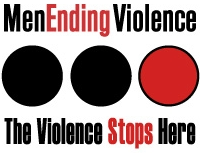She Was Doing Everything Right. The System Wasn’t.
Bailey McCourt was a mother of two, trying to rebuild her life after surviving intimate partner violence. She had done what the system told her to do—she reported the abuse, engaged with both criminal and family court, and trusted that legal system would protect her and her daughters.
She was raising her children, one of whom was his.
Her ex-partner was charged with choking and threatening her. He was released on bail with a $500 deposit. Charges continued to accumulate. And still, she tried to navigate parenting, safety, and survival—while he remained free.
On July 4, 2025, he was convicted of assault. He walked out of court. Hours later, he killed her with a hammer.
This happened in Kelowna, British Columbia. But it could have happened in any city, in any country where the violence of men is minimized, where legal systems delay action, and where victims are expected to keep themselves safe while offenders are given time, leniency, and second chances.
This wasn’t a tragedy. It was a systemic failure.
Who Was Responsible for Keeping Her Safe?
This case involved multiple institutions:
- RCMP Domestic Violence Unit, which presumably was monitoring his case and was responsible for enforcing conditions.
- Crown Counsel, who chose not to seek detention post-conviction.
- Provincial Court Judges, who scheduled sentencing months out and allowed him to remain free.
- Family Court, which was managing parenting time and safety for the two daughters—one of them his.
- Bail Supervision and Corrections, tasked with ensuring compliance.
- Community-based services, most likely offered to him—likely not backed by mandatory accountability or structured risk monitoring.
Why Services for Abusive Men Alone Aren’t Enough
There is often a quiet assumption that if an abusive man is offered counselling or support services, risk is being addressed.
But offering services to someone who poses a serious risk is not the same as ensuring safety for the person they’ve harmed.
What This Case Reveals—Everywhere
Around the world, femicide follows a hauntingly familiar pattern. A woman reports abuse. The perpetrator is already known to police. Charges are laid, but the court system delays. Institutions retreat behind procedure. And in the end, she is left unprotected—exposed to the very violence she sought protection from.
These are not unfortunate oversights or isolated lapses. They are deliberate choices made by systems that were never truly designed to protect survivors. The mechanisms of justice remain structured around containment of process, not prevention of harm.
What Must Change—Now
To end this pattern, we must stop treating gender-based violence and violence against women as a private matter or a peripheral concern. It must be understood and addressed as a central public safety crisis.
This begins with the mandatory and universal use of standardized gender specific risk assessments in both criminal and family court. When lethality indicators are present, post-conviction detention must be the default—not the exception.
We need real-time coordination across all actors in the system: police, Crown counsel, the judiciary, family law, and community supervision. These institutions must stop working in silos. Lives depend on it.
Above all, we need a fundamental shift in orientation. The organizing principle of every intervention must be victim-survivor safety—not procedural efficiency or deference to the accused’s freedom.
This Was Preventable. And It Is Not Unique.
Had three women in British Columbia been killed by a stranger in the same week, the province would have declared a public emergency. There would have been news conferences, inter-ministerial meetings, and swift policy action.
But because the danger came from partners and ex-partners—because it was intimate violence, not random—the system remained silent.
This case is not about one courtroom or one man. It is about a structure that persistently refuses to treat male violence as a systemic threat. And it is about the cost of that refusal—paid in the lives of women like Bailey McCourt, again and again.
Bailey deserved to be protected. Her daughters deserved to grow up with their mother. The public deserves institutions that will finally say “never again”—and act like they mean it.





THE DEFENSE LAWYERS!!!!!!!!!!!!!!!!!!!!!!!!!!!!!!!!!!
Crown a lot of the time asks for jail time but JUDGES usually go with what defense lawyers want. Defense lawyers are there in DV cases TO PROTECT THE ABUSER AT ALL COSTS! DEFENSE LAWYERS ARE THERE TO GET THEIR CLIENT OFF!!!!!!!!!!!!!!!!!!!!!!!!!!!
ALSO FAMILY COURT CONTINUES TO FORCE PEOPLE TO CO-PARENT WITH ABUSERS! EVEN IF THE CHILDREN ARE DESTORYED BY WITNESSING THE ABUSE AND HARM!
ALL ABOUT THE ABUSER. ABUSER RIGHTS TO THE KIDS THEY HAVE TRAUMATIZED.
ABUSERS RIGHTS TO CONTINUE TO ABUSE AND CAUSE HARM.
Who cares about the victim and well being of the children. Also long as the abusers rights are upheld at all costs. (I am being sarcastic here)